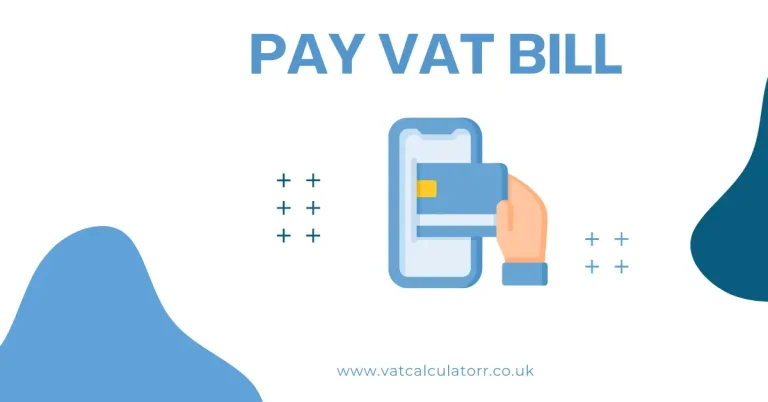Can VAT Returns be Filed Monthly or Quarterly in the UK?
Yes, VAT returns can be filed monthly or quarterly in the UK. Most UK businesses submit quarterly returns every three months, but monthly filing is available for businesses with specific needs.
This guide explains VAT return filing frequencies, deadlines, and eligibility requirements for UK businesses.
What Are the Standard VAT Return Filing Options?
UK businesses have three main VAT return filing frequencies: quarterly, monthly, and annual. Quarterly filing remains the standard option for most VAT-registered businesses.
Quarterly VAT Returns
Quarterly returns require submission every three months. The standard quarters end on 31 March, 30 June, 30 September, and 31 December.
Filing deadline: One month and seven days after the quarter ends.
Example quarterly deadlines:
- March quarter: Due 7 May
- June quarter: Due 7 August
- September quarter: Due 7 November
- December quarter: Due 7 February
Monthly VAT Returns
Monthly returns require submission every month. Businesses can request monthly filing by updating their HMRC registration details online.
Filing deadline: One month and seven days after each month ends.
Minimum commitment: HMRC requires monthly filing for at least 12 months once approved.
Who Can File Monthly VAT Returns?
Any VAT-registered business can request monthly filing. HMRC does not restrict monthly returns to specific business types or turnover levels.
Businesses That Benefit from Monthly Filing
Export businesses frequently choose monthly returns for faster VAT refunds. Other suitable businesses include:
- Companies with high transaction volumes
- Businesses requiring regular VAT refunds
Cash flow improvement: Monthly returns provide VAT refunds up to three times faster than quarterly returns.
Administrative requirement: Monthly filing increases paperwork and accounting costs compared to quarterly returns.
What Is the Annual VAT Accounting Scheme?
The Annual VAT Accounting Scheme allows eligible businesses to file one return per year. This scheme suits small businesses with predictable income patterns.
Annual Scheme Eligibility
Businesses with VAT taxable turnover of £1.35 million or less can join the annual scheme. The scheme requires advance payments during the year.
Payment structure:
- Monthly payments: 10% of estimated annual VAT bill
- Quarterly payments: 25% of estimated annual VAT bill
Exit requirement: Businesses must leave the scheme when turnover exceeds £1.6 million.
How Do VAT Return Deadlines Work?
VAT returns and payments are due one month and seven days after each accounting period ends. Electronic payments receive an additional seven-day extension.
Standard Deadline Rules
The same deadline applies to both return submission and VAT payment. Late submission or payment triggers penalty points under the current system.
Special Deadline Exceptions
Businesses making payments on account lose the seven-day electronic payment extension. These payments are due on specific dates within each quarter.
Annual scheme deadlines differ: Returns are due two months after the annual accounting period ends.
What Are the VAT Penalty Rules for Late Returns?
VAT penalties use a points-based system since January 2023. Each late return adds one penalty point to the business account.
Penalty Thresholds by Filing Frequency
Penalty thresholds vary based on filing frequency:
| Filing Type | Penalty Threshold | Time Period |
| Quarterly | 4 points | 12 months |
| Monthly | 5 points | 6 months |
| Annual | 2 points | 24 months |
Penalty amount: £200 for each late return after exceeding the threshold.
Late Payment Interest
Late VAT payments incur 4% annual interest, calculated daily. Interest applies from the original due date until payment clears HMRC’s account.
When Should Businesses Choose Monthly Returns?
Monthly returns suit businesses that regularly reclaim VAT or need improved cash flow. The decision depends on specific business circumstances.
Advantages of Monthly Filing
Monthly returns provide faster VAT refunds for export businesses. Additional benefits include:
- More frequent error detection and correction
- Better financial record accuracy
Disadvantages of Monthly Filing
Monthly returns increase administrative workload and accounting costs. Businesses must commit to monthly filing for at least 12 months.
When Should Businesses Choose Quarterly Returns?
Quarterly returns suit most UK businesses with stable cash flow needs. This option minimizes administrative burden while meeting HMRC requirements.
Benefits of Quarterly Filing
Quarterly returns reduce administrative work and accounting costs. Most businesses find quarterly filing easier to manage alongside other business activities.
Drawbacks of Quarterly Filing
Quarterly returns delay VAT refunds for businesses that regularly reclaim VAT. Error detection also occurs less frequently, potentially creating larger corrections.
How Do You Switch Between Filing Frequencies?
Businesses can change filing frequency by updating their HMRC registration details online. The process requires logging into the HMRC VAT online account.
Switching to Monthly Returns
Apply online through your HMRC VAT account to change to monthly returns. The change typically takes effect from the next accounting period.
Important commitment: Monthly filing must continue for at least 12 months once approved.
Returning to Quarterly Returns
Switching back to quarterly returns removes the seven-day electronic payment extension. Large businesses may also need to make payments on account.
What Are Payments on Account?
HMRC requires payments on account for businesses owing more than £2.3 million VAT annually. These are advance payments made during each quarter.
Payment on Account Schedule
Payments are due on the last working day of months two and three in each quarter. The amounts are calculated based on the business’s annual VAT liability.
Calculation method: Annual VAT liability divided by 24 equals the monthly payment amount.
Which VAT Schemes Can Combine with Different Filing Frequencies?
Most VAT schemes work with both monthly and quarterly filing. The VAT Flat Rate Scheme and Cash Accounting Scheme have specific turnover limits but no filing frequency restrictions.
Flat Rate Scheme Compatibility
The Flat Rate Scheme works with monthly, quarterly, or annual filing. Businesses pay a fixed percentage of turnover rather than calculating input and output VAT separately.
Turnover limit: £150,000 for joining, £230,000 for leaving the scheme.
What Digital Requirements Apply to VAT Returns?
All VAT returns must be submitted using Making Tax Digital (MTD) compatible software. Paper returns incur a £400 penalty since April 2022.
MTD Software Requirements
HMRC-approved software includes Xero, QuickBooks, and Sage. Businesses must maintain digital records and submit returns electronically.
Record keeping: Digital records must be maintained regardless of filing frequency.
How Do You Calculate VAT for Different Filing Frequencies?
VAT calculations remain the same regardless of filing frequency. Output VAT minus input VAT equals the amount due to HMRC or reclaimable.
Use our VAT calculator to check calculations before submitting returns.
Standard VAT Calculation
VAT amount equals net price multiplied by 20% (standard rate). The total price including VAT equals net price multiplied by 1.2.
Example: £100 net price becomes £120 including 20% VAT (£20 VAT amount).
What Happens If You Miss VAT Return Deadlines?
Missing deadlines triggers penalty points and potential financial penalties. The new system replaces the previous surcharge system.
Penalty Point Accumulation
Each late return adds one penalty point. Exceeding the threshold results in £200 penalties for subsequent late returns.
Point removal: Penalty points are removed after specified periods without late returns.
Do VAT Registration Thresholds Affect Filing Frequency?
VAT registration thresholds do not directly affect filing frequency choices. The current registration threshold is £90,000 annual turnover.
Registration requirement: Businesses must register within 30 days of exceeding the threshold.
Learn more about VAT registration requirements and thresholds.
Final Thoughts
VAT returns can be filed monthly, quarterly, or annually in the UK depending on business needs. Most businesses benefit from quarterly filing due to lower administrative costs and simpler management.
Monthly filing suits export businesses and companies requiring frequent VAT refunds. Annual filing works for small businesses with turnover under £1.35 million.
Choose the filing frequency that matches your cash flow needs, administrative capacity, and business size. Review your choice annually as business circumstances change.Key deadline reminder: All VAT returns and payments are due one month and seven days after each accounting period ends, regardless of filing frequency.





